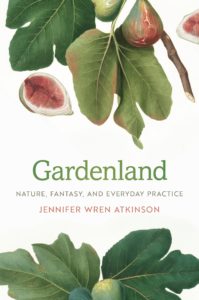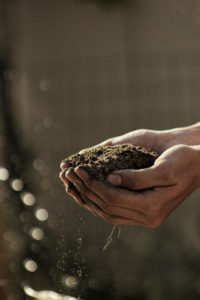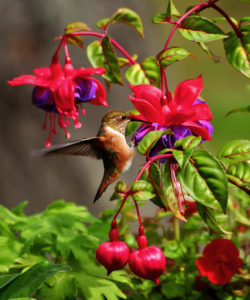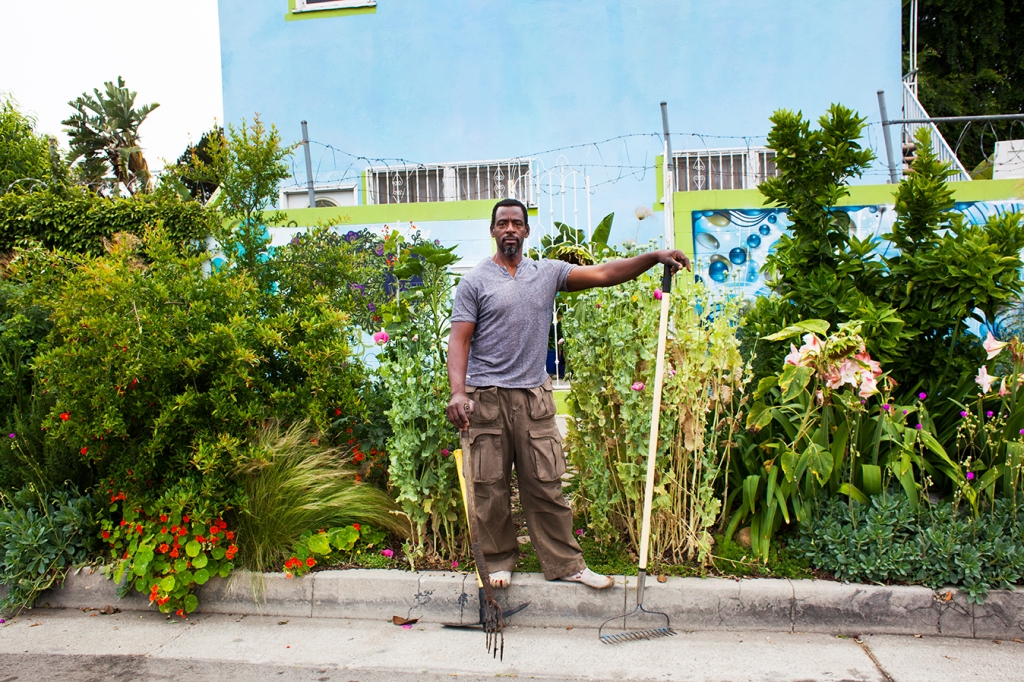By Jennifer Wren Atkinson
Earlier this spring the coronavirus pandemic set off an unprecedented home gardening boom. In the rush to plant edible seedlings, gardeners depleted suppliers of inventory, quickly making seeds the new toilet paper. Within the U.S., this surge has been repeatedly compared to WWII victory gardening, when Americans grew food at home to feed their families. News outlets have run headlines like “Victory Gardens Making Comeback During COVID-19” and “Food Supply Anxiety Brings Back Victory Gardens.”

Yet while the analogy is convenient, it reveals only one piece in a much bigger story about why people garden in hard times. Americans have long turned to the soil in moments of upheaval to manage anxieties and imagine alternatives. These desires are not always self-evident — and they are certainly about more than just food. Without extensive space and skill, dreams of feeding one’s own family turn out to be fanciful.
Beneath the appeal of the garden lies something far more complex — a hidden landscape of desire for belonging and connection; for contact with nature and creative expression; for beauty, purpose, health and home.
In 2018 I took up this question of why we garden in a book titled Gardenland: Nature, Fantasy, and Everyday Practice. Aiming to evoke Fantasyland or Neverland in the title, my premise was that gardening is a way to indulge desires otherwise suspended in daily life. Two years later, our pandemic gardening craze only reconfirms my point.
By the time COVID-19 hit our shores, Americans were already accustomed to online dating and telework, to meals procured through apps and eaten alone before a screen. But those virtual trends have been dizzyingly accelerated with the overnight imposition of self-isolation and shelter in place. And now many remaining enclaves of flesh-and-blood presence — happy hour and yoga, wedding vows and last rites — have likewise pixelated onto screens.

Our digital age has created its own distinctive impulse to garden, especially as the proliferation of screens has intensified the appeal of hands-on activity. Photo by Gabriel Jimenez on Unsplash.
With the disappearance of so much intimate encounter, the basic act of plunging our hands in the soil gains an overwhelming allure. Like handshakes and hugs, gardening cannot be done remotely. And so perhaps what drives us to garden now is not the fear of hunger so much as hunger for physical contact, the desire for nature, and a longing to engage in work that is real.
The bewildering retreat of embodied experience surely puts a unique twist on our present moment. And yet, as Gardenland reveals, the overall pattern of crisis gardening is as old as dirt.
Prior to the Industrial Revolution, most Americans would have considered growing food for fun as rather odd. But as they moved into cities and took factory and office jobs, coming home to putter around in one’s potato beds took on a kind of novelty. Gardening also appealed to nostalgia for the passing of traditional farm life.
For Black Americans denied opportunities to leave behind subsistence activities, Jim Crow-era gardening embodied a different set of desires. Alice Walker recalls her mother tending an extravagant flower garden late at night after finishing brutal days of field labor, leading the author to wonder why anyone would voluntarily add one more task to such a difficult life. Later, Walker understood that gardening wasn’t just another form of labor; it was an act of artistic expression. Particularly for Black women relegated to society’s least desirable jobs, gardening offered the chance to reshape a small piece of the world in one’s “personal image of Beauty.“
This isn’t to say that food is always a secondary factor in gardening passions. Convenience cuisine in the 1960s spawned its own generation of home-growers and back-to-the-land movements rebelling against a midcentury diet now infamous for Jell-O salads, canned-food casseroles, TV Dinner and Tang. This was followed by the wild popularity of farmers markets, which reintroduced farm-fresh peaches to shoppers accustomed to Cellophane-wrapped, rock-hard nuggets. During the opening days of the 1970s Greenmarket, New Yorkers actually rushed the produce stands and got into fist fights over fresh Jersey tomatoes and corn on the cob, a scene memorably captured by journalist John McPhee’s essay “Giving Good Weight.”
My book also looks at millennial-era growers who garden in search of community and inclusion. Immigrants and inner-city residents lacking access to green space and fresh produce have taken up “guerrilla gardening” in vacant lots to revitalize their communities. “Gangsta-gardener” Ron Finley was even threatened with arrest for installing vegetable plots along sidewalks. Such attempts to reclaim the commons challenge dominant relations of private property, a contradiction exemplified when reporters asked if the gardeners were concerned that people would steal the food. “Hell no I ain’t afraid they’re gonna steal it,” Finley responded, “that’s why it’s on the street!”
____
It’s too soon to know how gardening will shape the memories of the COVID-19 generation. But history suggests that food will play only one role in a story packed with diverse characters and motives, including the search for connection, purpose, and hope for nature’s resilience.
The day before California went into lockdown, I watched my own sister bring home a carload of gardening supplies and begin transforming her neglected backyard into a blooming sanctuary. She also got into Zoom workouts, binged on Netflix, and joined online happy hours. But as these weeks stretch into months, she seems to have less energy for virtual encounters, while gardening has overtaken her life. Plantings that started out back have expanded around the side of the house, and gardening sessions have stretched later into the evening, when she sometimes works by headlamp.
When I asked about her new obsession, my sister kept returning to her unease with screen time. She told me that virtual sessions gave a momentary boost, but “there’s always something missing … an empty feeling when you log off.” I think we all know what that missing something is. It’s the physical presence of others, and the opportunity to use our bodies in ways that matter. It’s the same longing for community that fills coffee shops with fellow gig workers and yoga studios with the heat of other bodies. It’s the electricity of the crowd at a concert, the students whispering behind you in class.
And so if the novel coronavirus underscores our age of distancing, gardening arises as an antidote, extending the promise of contact with something real. While the virtual world may have its own ability to absorb us, it is not immersive in the way gardening can be.
Indeed, the figures I feature in Gardenland affirm that gardening’s intensely physical character is central to their love of the craft. Near the end of the book I quote the Czech author Karel Čapek, who wrote that gardeners trapped indoors during the frozen months of winter don’t fantasize about the visual elements of a completed garden so much as the desire to once again plunge their hands into the soil: “to hoe, manure, trench, dig, loosen, rake, order, water, multiply,” to “dung, weed, sow,” to “smell the soil, poke out shoots with the finger,” “wipe off sweat, ease [one’s] back,” “to feel hard buds, develop the first spring blisters, and altogether live, broadly and vigorously, after the gardener’s fashion.” Nearly a hundred years after Čapek penned these words, a society in quarantine can surely relate to this portrait of the gardener in suspended animation, and the explicitly sensual language used to depict his longing for the return to physical life.

In an age of accelerating climate breakdown, gardening appeals to our hope for nature’s resilience. Photo by Bryan Hanson on Unsplash.
Yet beyond the opportunity to experience ourselves as embodied beings, gardening also connects us to the larger body of our organic world, to elements of sun, rain, seeds and soil. It allows us to participate in processes that support the existence and flourishing of all living beings, and reaffirms our membership in that larger community of life.
Surely this offers a final clue as to why the COVID-19 pandemic has ignited such a flurry of gardening. Ours is an era of profound loneliness, and the isolation of our digital lives is only one of the causes. That existential loneliness also proceeds from the staggering retreat of nature, a process underway well before the advent of screen addiction. The same generation now reeling from the global pandemic has already witnessed the dying of our oceans and rivers, seen glaciers disappear, watched Australia and the Amazon burn, and mourned the astonishing loss in global wildlife. We have adopted terms like “nature deficit disorder,” “ecological grief,” “climate anxiety” and “biological annihilation.” In some fundamental sense, our addiction to virtual experience may be a symptom of this loss, a way of seeking substitute pleasures as contact with wildness disappears.
I think that’s why videos and headlines about nature’s “comeback” have been so popular during shutdown and likely come from the same desires driving the gardening craze. In a time of suffering and accelerating climate breakdown, we are desperate for signs of life’s resilience, whether that’s coyotes on the Golden Gate Bridge or seeds sprouting in the backyard. Some of these stories are credible, others dubious. What matters, I think, is that they offer a glimpse of the world as we wish it could be.
 Jennifer Atkinson is a Senior Lecturer at the University of Washington, Bothell, and the author of Gardenland: Nature, Fantasy, and Everyday Practice (University of Georgia Press, 2018). She is also creator and host of “Facing It,” a podcast exploring the emotional toll of our climate crisis. Jennifer’s undergraduate seminar on “Climate Grief & Eco-Anxiety” was one of the first college courses of its kind in the U.S., and has been featured in The Washington Post, the Los Angeles Times, NBC News, The Seattle Times, Grist, and dozens of other outlets. Learn more at her website.
Jennifer Atkinson is a Senior Lecturer at the University of Washington, Bothell, and the author of Gardenland: Nature, Fantasy, and Everyday Practice (University of Georgia Press, 2018). She is also creator and host of “Facing It,” a podcast exploring the emotional toll of our climate crisis. Jennifer’s undergraduate seminar on “Climate Grief & Eco-Anxiety” was one of the first college courses of its kind in the U.S., and has been featured in The Washington Post, the Los Angeles Times, NBC News, The Seattle Times, Grist, and dozens of other outlets. Learn more at her website.
If this piece makes you want to read the book and learn more, University of Georgia Press is offering a 50% discount on books until June 30, 2020, including free shipping for orders over $25 in the U.S. Use code 08UGAP during checkout.

